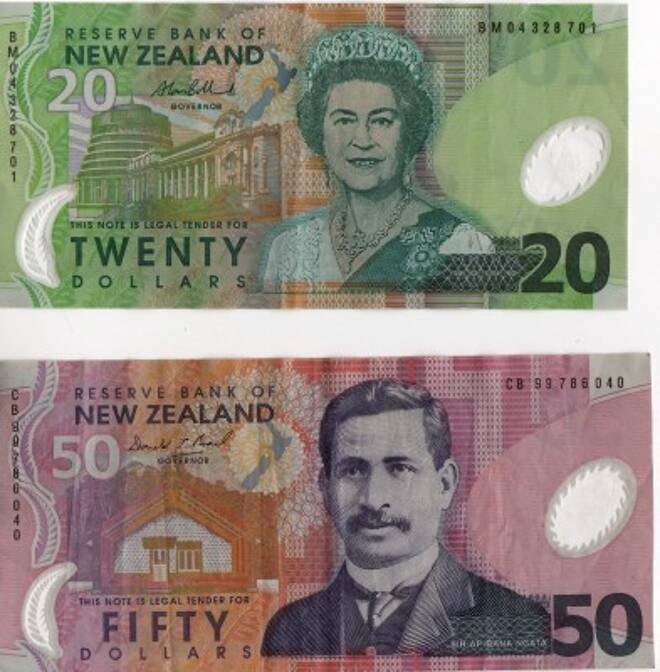Advertisement
Advertisement
AUD/USD and NZD/USD Fundamental Analysis – Forecast for the Week of December 12, 2016
By:
The Australian and New Zealand Dollars posted a two-sided trade on the daily charts last week before closing lower for the week. The price action was
The Australian and New Zealand Dollars posted a two-sided trade on the daily charts last week before closing lower for the week. The price action was fueled by trader reaction to domestic reports early in the week and to the strengthening U.S. Dollar late in the week. Both the Aussie and the Kiwi were also influenced by the European Central Bank’s monetary policy decision. Technical factors may have also influenced the direction of both currencies.
The AUD/USD closed the week at .7446, down 0.0005 or 0.06%. The NZD/USD finished the week down .0002 or -0.03% at .7132.
The Australian Dollar firmed early in the week after the Reserve Bank of Australia voted to leave its benchmark interest rate unchanged at 1.50% as highly anticipated. The RBA also made a few minor adjustments to its policy statement although it did not that “some slowing in the year-ended growth rate is likely, before it picks up again.”
RBA Governor Philip Lowe went on to say that further increases in exports of resources are expected as completed projects come on line, and the outlook for business investment remains subdued, although measures of business sentiment remain above average.
Traders were disappointed, however, because the RBA failed to acknowledge that the growth slowdown would likely be worse than expected.
And that it was because on December 6, the ABS reported that Australian economic growth declined in the September quarter, posting its largest contraction since the global financial crisis. Real GDP in seasonally adjusted chained volume terms fell by 0.5%, leaving the year-on-year increase at 1.8%. Traders were looking for a quarterly decline of 0.1% with the year-on-year growth rate at 2.2%.
From a technical perspective, the AUD/USD just couldn’t attract enough buying interest to drive the market into the main upside target at .7544 to .7599. This indicates there may be a big seller in there.
The New Zealand Dollar was influenced last week by comments from Reserve Bank of New Zealand Governor Graeme Wheeler. He said the “trend” of lower interest rates, asset appreciation and a high New Zealand Dollar “may finally be turning”. He also issued a warning on the housing market, saying “soft landings” after a boom are rare.
Technical factors also played a role in the sell-off at the end of the week after investors responded to a test of a major retracement zone at .7186 to .7237. The high for the week at .7222 fell inside this range.
Forecast
Economic data will be scarce until Wednesday when the U.S. releases data on Retail Sales and Producer Prices. The big news on December 14 will be the Federal Open Market Committee’s monetary policy statement and press conference.
The Fed is widely expected to raise its benchmark interest rate by 25 basis points. However, the market moving event is likely to be the forecast for rates in 2017. The frequency of rate hikes next year will likely influence the direction of the AUD/USD and NZD/USD. One rate hike is expected. Two or more will likely be bullish for the U.S. Dollar.
Additional reports include the Australian Employment Change and Unemployment Rate reports. The U.S. will also report on Consumer Inflation, manufacturing and Building Permits.
About the Author
James Hyerczykauthor
James is a Florida-based technical analyst, market researcher, educator and trader with 35+ years of experience. He is an expert in the area of patterns, price and time analysis as it applies to futures, Forex, and stocks.
Did you find this article useful?
Latest news and analysis
Advertisement
